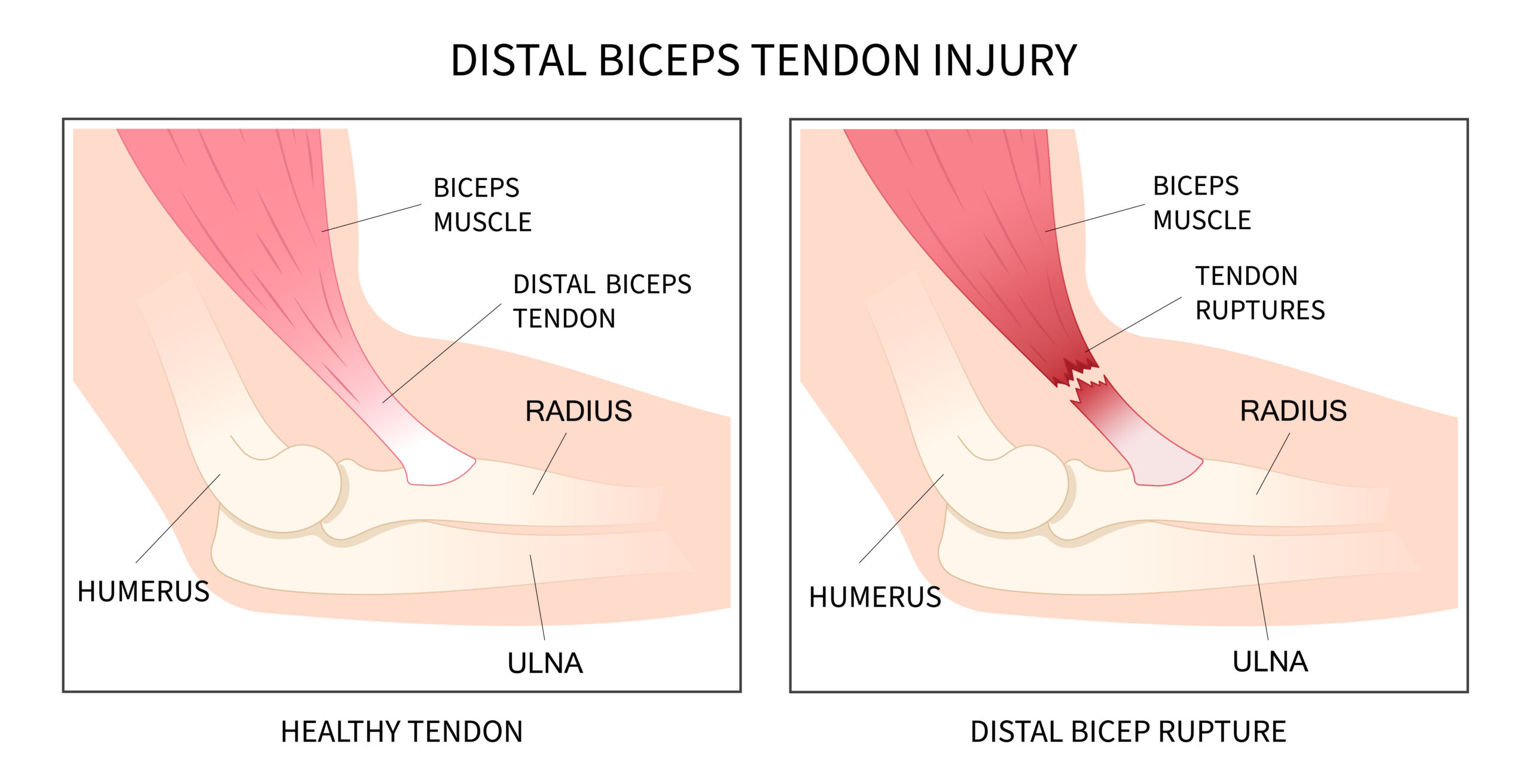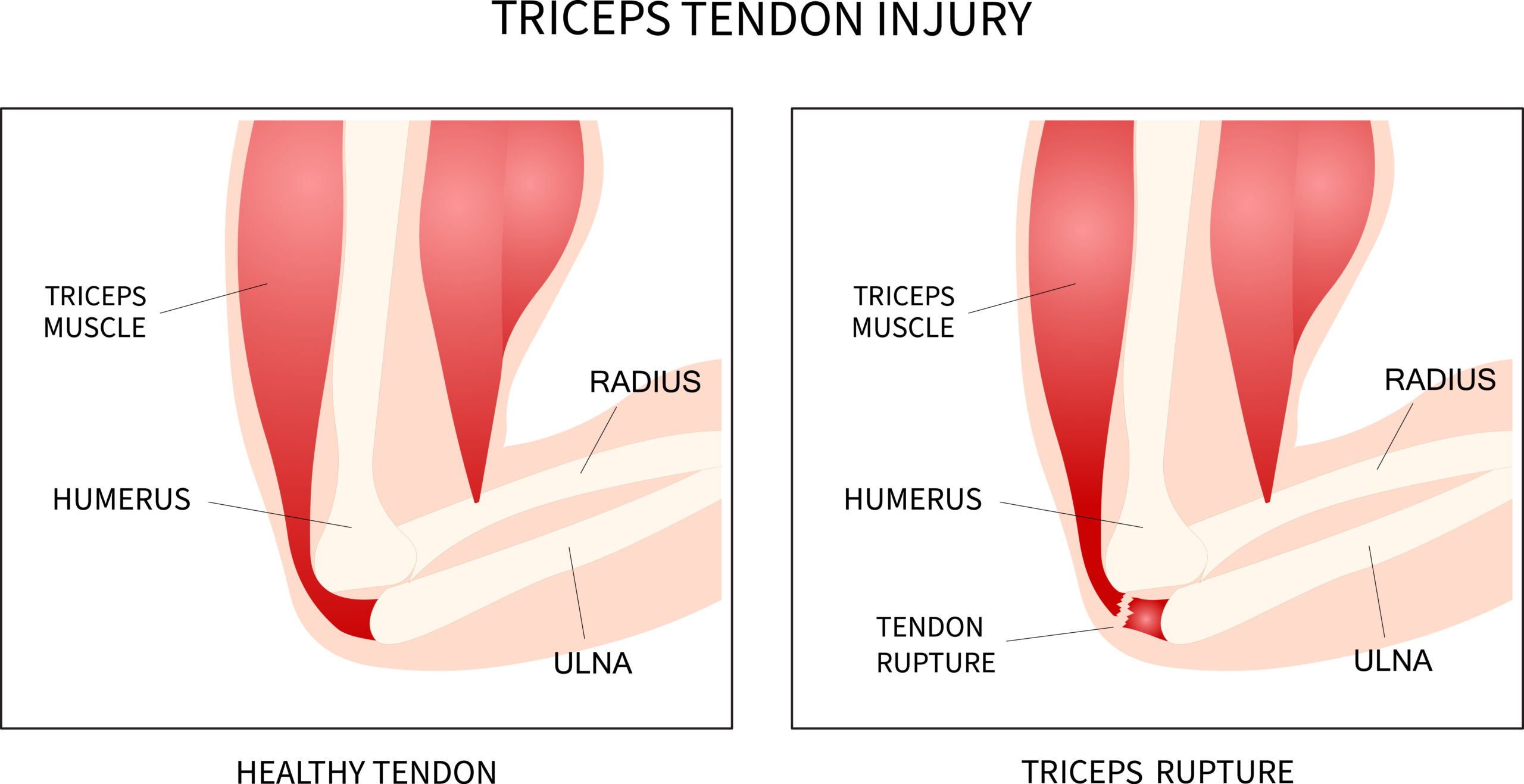Ruptured Biceps or Triceps Tendon
Biceps Tendon Tear: The biceps tendon is a strong cord-like structure that connects the biceps muscle to the bones in your shoulder and elbow. A biceps tendon tear refers to the partial or complete rupture of this tendon. It commonly occurs near the shoulder or at the elbow.

Causes: Biceps tendon tears can happen due to several reasons:
1. Acute injury: A sudden forceful movement or a direct blow to the arm can cause the tendon to tear.
2. Overuse: Repeatedly performing activities that involve repetitive overhead motions, such as throwing or lifting heavy weights, can gradually weaken the tendon, making it more susceptible to tearing.
3. Age-related degeneration: As we age, the tendons in our body naturally become weaker and less flexible, increasing the risk of tears.
Symptoms: If you have a biceps tendon tear, you may experience the following symptoms:
1. Sudden, severe pain in the upper arm or elbow area.
2. A “popping” sensation at the time of injury.
3. Swelling, tenderness, and bruising around the affected area.
4. Weakness or difficulty in moving the arm or elbow.
5. A bulge or a “Popeye deformity” in the upper arm, where the biceps muscle may appear bunched up due to the detached tendon.
Treatment: Treatment options for a biceps tendon tear depend on various factors such as the severity of the tear, your age, activity level, and overall health. Conservative treatment may include rest, ice, pain medication, and physical therapy to improve strength and flexibility. In some cases, surgery may be recommended, particularly for young, active individuals or for complete tears. Surgical procedures can involve reattaching the torn tendon to the bone or removing the damaged portion altogether.
Triceps Tendon Tear: Similar to the biceps tendon tear, the triceps tendon tear involves the tearing of the tendon that connects the triceps muscle to the bones in the elbow.

Causes: Triceps tendon tears can occur due to similar reasons as biceps tendon tears:
1. Acute injury: A fall on an outstretched hand or a direct impact to the back of the arm can lead to a triceps tendon tear.
2. Overuse: Engaging in repetitive activities that involve forcefully straightening the elbow, such as weightlifting or throwing, can cause gradual wear and tear on the tendon.
3. Age-related degeneration: As we get older, the tendon may become weaker and more prone to tearing.
Symptoms: The symptoms of a triceps tendon tear include:
1. Sudden, severe pain at the back of the elbow.
2. Swelling and tenderness around the injured area.
3. Difficulty in straightening the elbow against resistance.
4. Weakness in the affected arm.
Treatment: Treatment for triceps tendon tears is similar to that of biceps tendon tears. Conservative treatment may include rest, ice, pain medication, and physical therapy. Surgery is generally recommended for complete tears or in cases where conservative treatment fails to provide satisfactory results. Surgical repair involves reattaching the torn tendon to the bone.
It’s important to consult with a healthcare professional if you suspect a biceps or triceps tendon tear. They can provide a proper diagnosis and guide you through the appropriate treatment options based on your specific condition.
